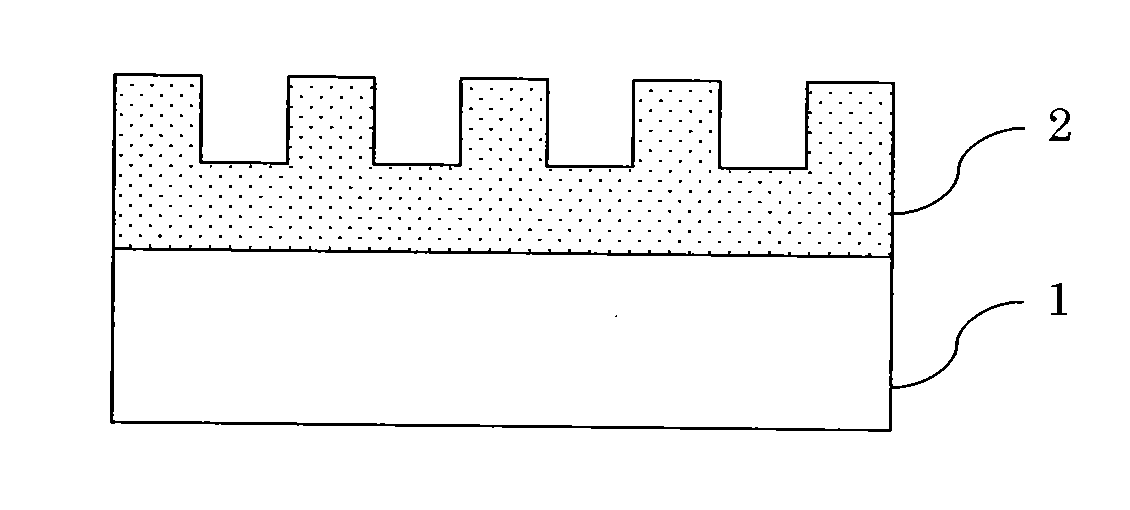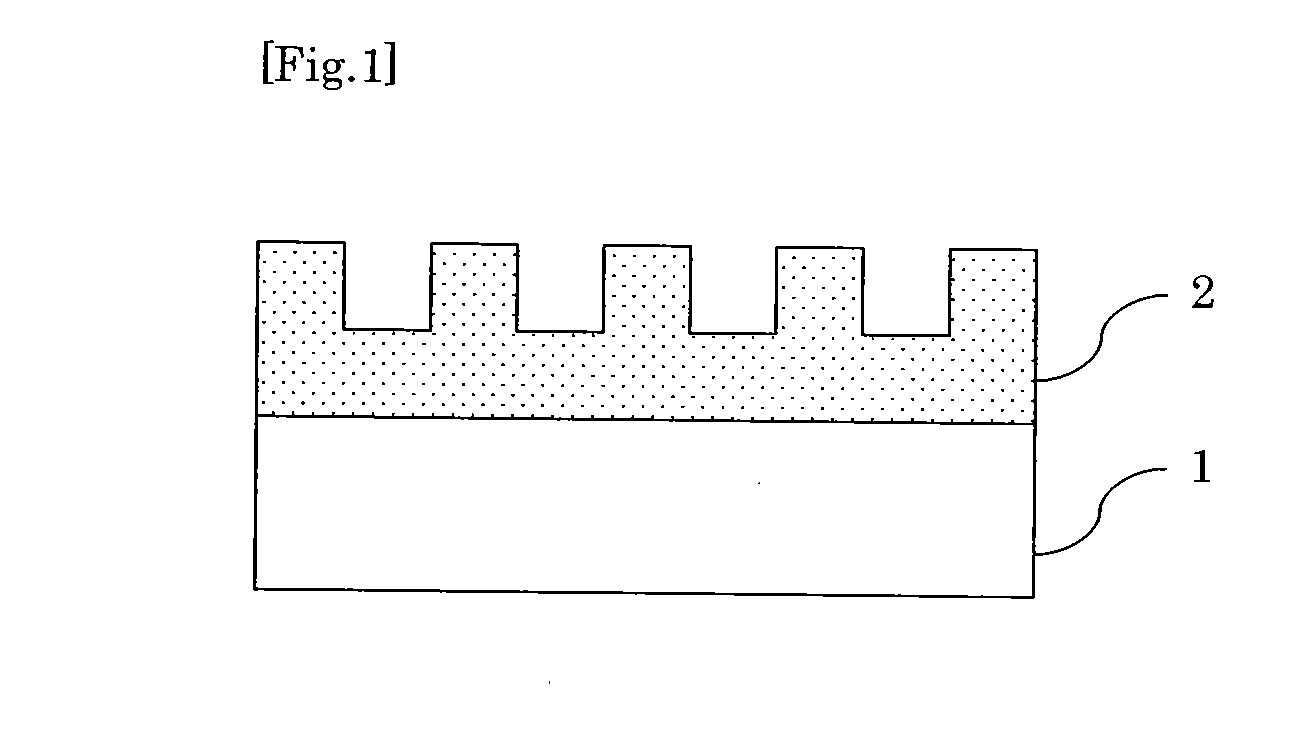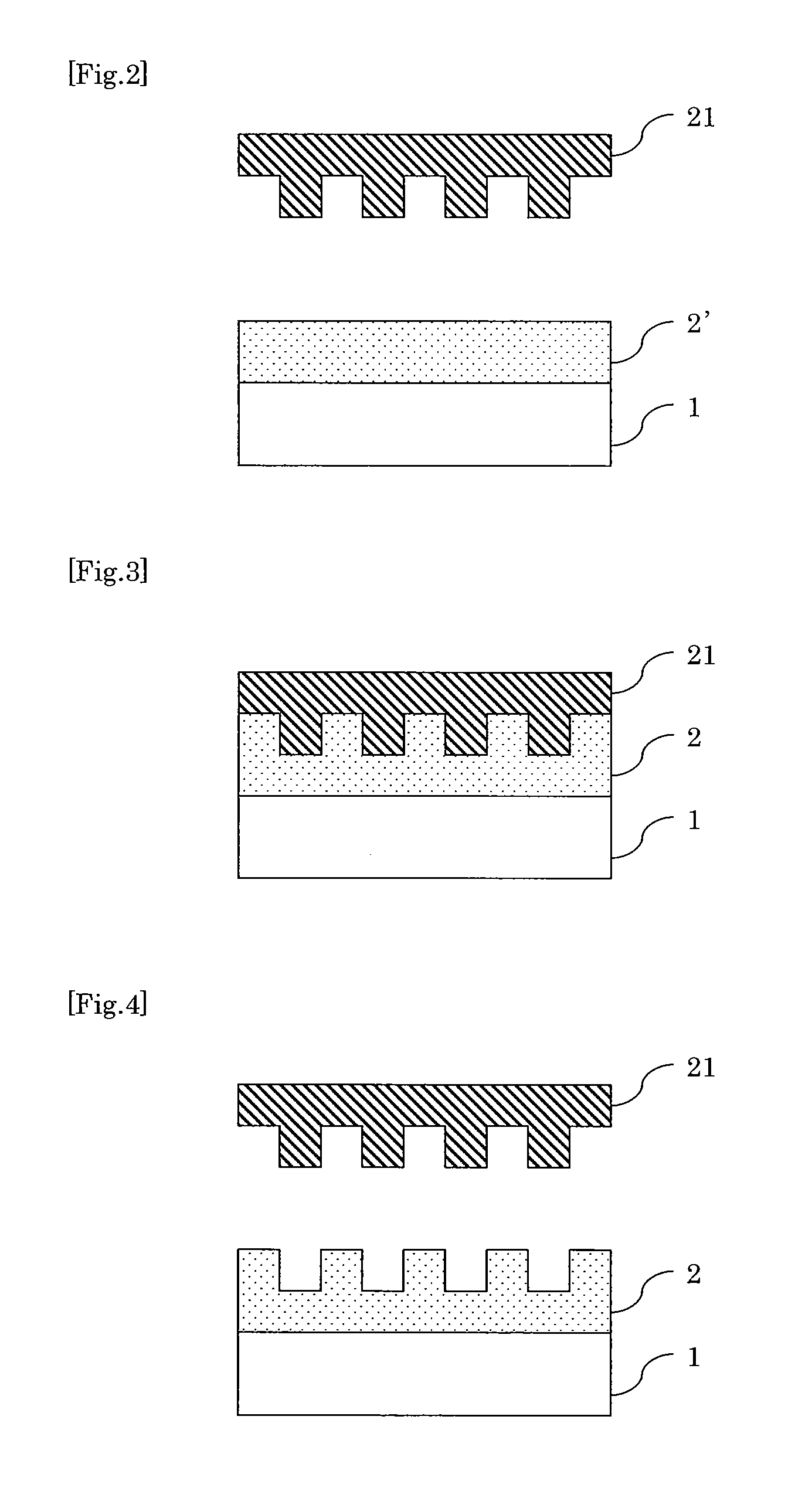Diffraction grating, organic el element using the same, and manufacturing methods thereof
- Summary
- Abstract
- Description
- Claims
- Application Information
AI Technical Summary
Benefits of technology
Problems solved by technology
Method used
Image
Examples
example 1
(i) Fabrication of Diffraction Grating
[0320]A glass substrate 1 (manufactured by Matsunami Glass Ind., Ltd. under the product name of “Micro slide glass”) and a curable resin 2′ (manufactured by Norland Optical Adhesive under the product name of “NOA 61”) were prepared. Then, the curable resin 2′ was applied onto the glass substrate 1. Thereafter, the curable resin 2′ was cured by irradiation with ultraviolet rays for 1 hour, with Master Block (M-3B) obtained in Fabrication Example 1 being pressed thereto (see FIGS. 2 and 3). Then, Master Block (M-3B) was detached from the cured resin layer 2, and thereby the cured resin layer 2 having concavities and convexities formed thereon was formed on the glass substrate 1. Thus, a diffraction grating was obtained (see FIG. 4).
[0321]A concavity and convexity analysis image was obtained by analyzing the shape of the concavities and convexities formed on the surface of the cured resin layer in the obtained diffraction grating by use of an atomi...
example 2
[0337]A block copolymer solution was obtained by dissolving 99 mg of Block Copolymer (P-2) in 10 g of toluene, followed by filtration through a membrane filter having a pore diameter of 0.45 μm. The obtained block copolymer solution was spin coated onto a polyethylene naphthalate film (manufactured by Tejin DuPont Films Japan Limited) serving as a base member at a spin speed of 800 rpm. Then, the coating film was dried on a hot plate of 55° C. for 10 minutes, and subsequently subjected to an annealing treatment in a vacuum oven of 130° C. for 24 hours. Thus, First Master Block (M-1A) having concavities and convexities formed on a surface thereof due to micro phase separation was obtained.
[0338]A concavity and convexity analysis image of the obtained master block was obtained by analyzing the shape of the concavities and convexities formed on the surface by use of an atomic force microscope (a scanning probe microscope equipped with an environment control unit “Nanonavi II Station / E-...
example 3
[0347]A 0.1% by mass toluene solution of Random Copolymer was spin coated onto a silicon wafer, and then a heat treatment was carried out at a temperature of 170° C. for 24 hours. Thus, a base member was obtained. A block copolymer solution was obtained by dissolving 187 mg of Block Copolymer (P-1) in 10 g of toluene, followed by filtration through a membrane filter having a pore diameter of 0.45 μm. The thus obtained block copolymer solution was spin coated onto the base member at a spin speed of 800 rpm. Then, the coating film was dried on a hot plate of 55° C. for 10 minutes, and subsequently subjected to an annealing treatment in an oven of 170° C. for 24 hours. Thus, First Master Block (M-4A) having concavities and convexities formed on a surface thereof due to micro phase separation was obtained.
[0348]A concavity and convexity analysis image of the obtained master block was obtained by analyzing the shape of the concavities and convexities formed on the surface by use of a sca...
PUM
 Login to View More
Login to View More Abstract
Description
Claims
Application Information
 Login to View More
Login to View More - R&D
- Intellectual Property
- Life Sciences
- Materials
- Tech Scout
- Unparalleled Data Quality
- Higher Quality Content
- 60% Fewer Hallucinations
Browse by: Latest US Patents, China's latest patents, Technical Efficacy Thesaurus, Application Domain, Technology Topic, Popular Technical Reports.
© 2025 PatSnap. All rights reserved.Legal|Privacy policy|Modern Slavery Act Transparency Statement|Sitemap|About US| Contact US: help@patsnap.com



